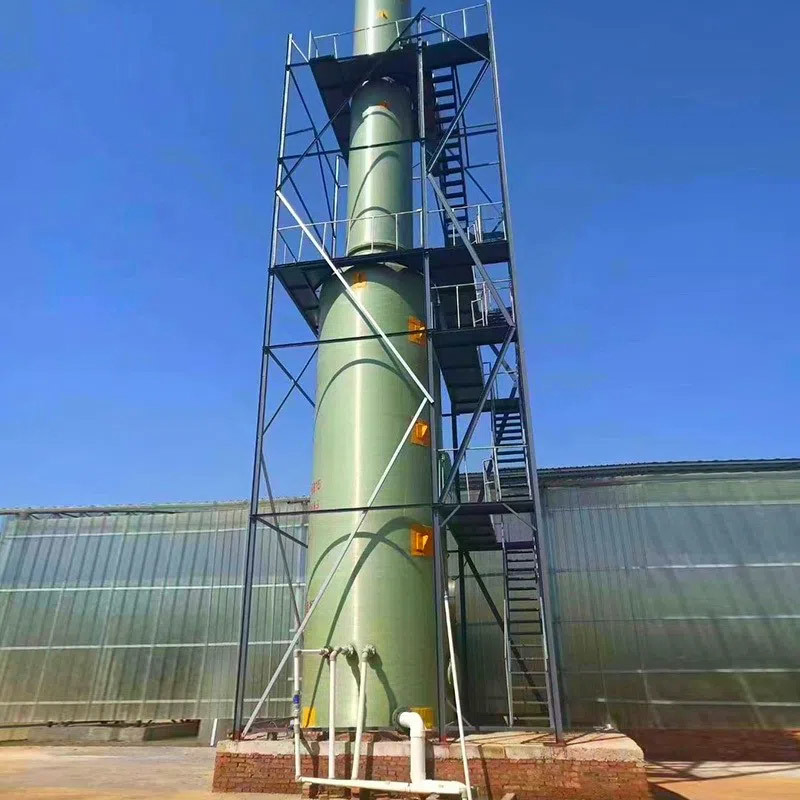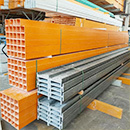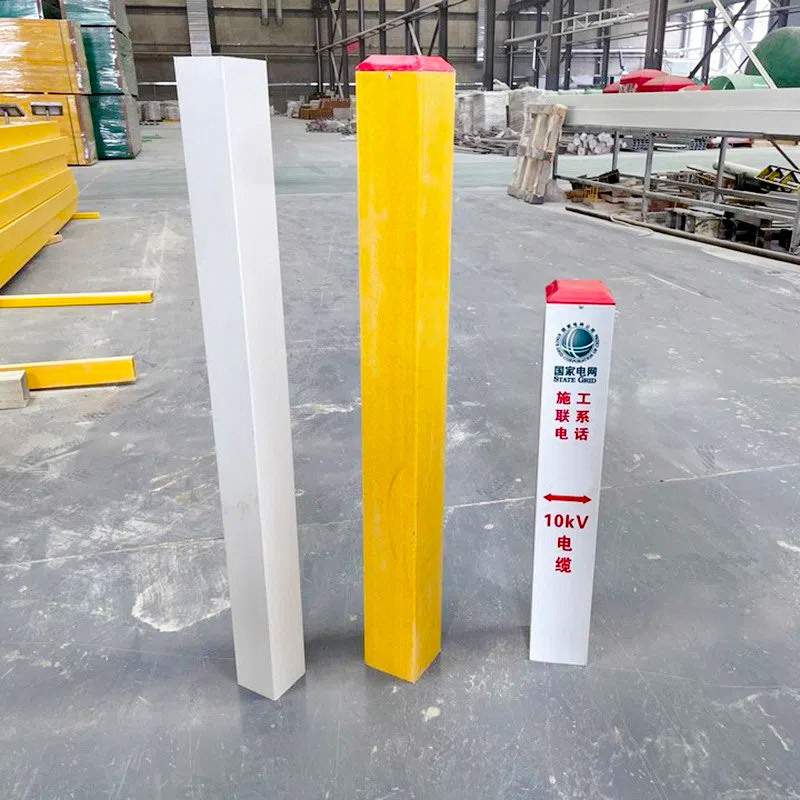How Advanced Fiberglass Desulfurization Towers Improve Chemical Processing
Jun 24,2025

How Advanced Fiberglass Desulfurization Towers Improve Chemical Processing
Table of Contents
- 1. Introduction to Desulfurization in Chemical Processing
- 2. The Significance of Desulfurization in the Chemical Industry
- 3. What are Fiberglass Desulfurization Towers?
- 4. Advantages of Advanced Fiberglass Desulfurization Towers
- 5. Enhancing Efficiency in Chemical Processing
- 6. Reducing Environmental Impact with Desulfurization
- 7. Case Studies: Successful Implementation of Fiberglass Towers
- 8. Future Trends in Desulfurization Technology
- 9. Frequently Asked Questions
- 10. Conclusion
1. Introduction to Desulfurization in Chemical Processing
In the realm of chemical processing, the removal of sulfur dioxide (SO2) from emissions is paramount. **Desulfurization** plays a critical role in maintaining air quality and adhering to stringent environmental regulations. As industries evolve, the need for more efficient and innovative desulfurization technologies becomes increasingly vital. This is where **advanced fiberglass desulfurization towers** come into play, revolutionizing the way we manage sulfur emissions while enhancing operational efficiency.
2. The Significance of Desulfurization in the Chemical Industry
Desulfurization is not merely a regulatory requirement; it is essential for the sustainability of chemical manufacturing processes. The chemical industry contributes significantly to global SO2 emissions, which can lead to acid rain, respiratory problems, and other environmental issues. By investing in effective desulfurization methods, companies can mitigate these impacts and foster a more sustainable future.
3. What are Fiberglass Desulfurization Towers?
Fiberglass desulfurization towers are advanced systems designed to remove sulfur compounds from industrial emissions through various chemical processes. These towers utilize **fiberglass-reinforced plastic (FRP)** as a primary material, which offers several advantages over traditional materials like steel, such as corrosion resistance, lightweight construction, and lower maintenance costs. The design of these towers allows for optimal gas-liquid contact, enhancing the efficiency of the desulfurization process.
4. Advantages of Advanced Fiberglass Desulfurization Towers
The integration of fiberglass in desulfurization towers presents multiple advantages:
4.1 Corrosion Resistance
Fiberglass is inherently resistant to the corrosive effects of sulfuric acid and other chemicals, resulting in longer equipment lifespan and reduced maintenance costs.
4.2 Lightweight and Durable
The lightweight nature of fiberglass allows for easier installation and transportation, reducing overall project costs. Moreover, fiberglass is durable and can withstand the rigors of industrial environments.
4.3 Enhanced Performance
The design of fiberglass towers promotes superior gas-liquid interaction, leading to improved absorption rates of sulfur compounds.
4.4 Cost-Effectiveness
While the initial investment may be higher, the long-term savings associated with reduced maintenance and operational costs make fiberglass towers a cost-effective solution.
5. Enhancing Efficiency in Chemical Processing
Efficiency in chemical processing is crucial for maximizing production while minimizing waste. Advanced fiberglass desulfurization towers contribute to this efficiency through:
5.1 Optimized Design
The internal structures of fiberglass towers are engineered to optimize flow patterns, ensuring that gas streams interact effectively with the absorbent materials.
5.2 Lower Energy Consumption
Fiberglass towers operate at lower temperatures compared to traditional systems, resulting in reduced energy consumption and lower operational costs.
5.3 Improved Reaction Rates
The unique properties of fiberglass allow for faster reaction rates in the desulfurization process, leading to higher throughput and efficiency.
6. Reducing Environmental Impact with Desulfurization
The environmental benefits of advanced fiberglass desulfurization towers are substantial:
6.1 Lower Emissions
By effectively removing sulfur compounds from emissions, these towers help industries comply with environmental regulations, thereby reducing their overall carbon footprint.
6.2 Sustainable Chemical Processing
Integrating advanced desulfurization technology contributes to sustainable chemical processing practices, promoting a greener and healthier environment.
6.3 Community Health Benefits
Reducing sulfur emissions not only benefits the environment but also improves public health by lowering the risk of respiratory illnesses and other health issues associated with air pollution.
7. Case Studies: Successful Implementation of Fiberglass Towers
Several companies have successfully implemented advanced fiberglass desulfurization towers, achieving significant improvements in both operational efficiency and environmental compliance.
7.1 Case Study 1: Global Chemical Manufacturer
In a recent project, a major global chemical manufacturer replaced its traditional desulfurization system with fiberglass towers. The result was a 30% reduction in sulfur emissions and a 20% decrease in operational costs due to lower maintenance requirements.
7.2 Case Study 2: Regional Refinery
A regional refinery faced challenges with sulfur emissions and high maintenance costs. By switching to fiberglass desulfurization towers, they improved their SO2 removal efficiency by 40%, while also reducing maintenance downtime significantly.
8. Future Trends in Desulfurization Technology
As the demand for cleaner industrial processes grows, the future of desulfurization technology is poised for innovation. Key trends include:
8.1 Smart Technology Integration
The incorporation of IoT and smart sensors for real-time monitoring and optimization of desulfurization processes is expected to enhance operational efficiency further.
8.2 Advanced Material Development
Research into new materials that can improve efficiency and reduce costs will likely lead to the next generation of desulfurization technologies.
9. Frequently Asked Questions
9.1 What is the primary function of a desulfurization tower?
The primary function of a desulfurization tower is to remove sulfur compounds from industrial emissions, thereby reducing environmental pollution.
9.2 How do fiberglass desulfurization towers differ from traditional systems?
Fiberglass towers are more resistant to corrosion, lighter, and often more efficient than traditional steel-based systems, leading to lower maintenance and operational costs.
9.3 What industries benefit from fiberglass desulfurization towers?
Industries such as chemical manufacturing, oil refining, and power generation can significantly benefit from the use of fiberglass desulfurization towers.
9.4 Are fiberglass desulfurization towers cost-effective?
While the initial investment may be higher, the long-term savings in maintenance and operational costs make fiberglass desulfurization towers a cost-effective solution.
9.5 What are the environmental benefits of using these towers?
The use of fiberglass desulfurization towers leads to lower sulfur emissions, contributing to improved air quality and public health.
10. Conclusion
Advanced fiberglass desulfurization towers represent a significant advancement in the fight against sulfur emissions in the chemical processing industry. By offering enhanced efficiency, lower maintenance costs, and substantial environmental benefits, these towers are paving the way for a more sustainable future in industrial processing. Investing in this technology not only fulfills regulatory requirements but also promotes corporate responsibility and environmental stewardship. Embracing advanced fiberglass desulfurization technology is not just an option; it is a crucial step towards a cleaner, greener planet.





